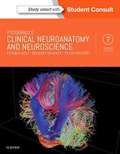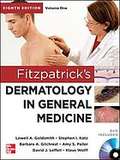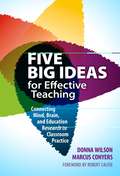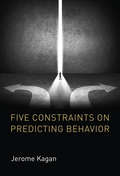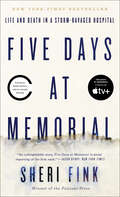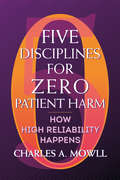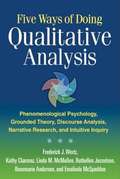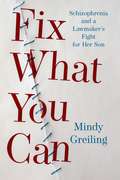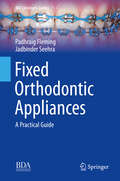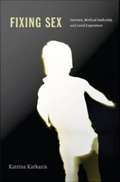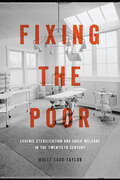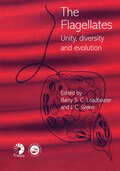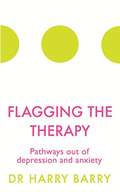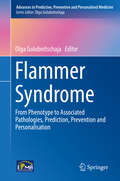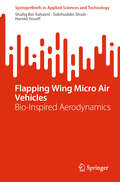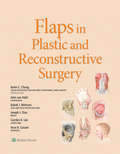- Table View
- List View
Fitte kinderen, sportieve tieners: over de invloed van bewegen en sport op de gezondheid van jongeren
by Han C.G. KemperWat is nu precies de invloed van bewegen en sport op de gezondheid en fitheid van jongeren? Dit boek geeft actuele, wetenschappelijke informatie over fysiologische aspecten van groei, ontwikkeling en rijping van jongeren. Daarmee biedt het inzicht in de effecten van lichaamsbeweging op hun gezondheid. Fysiologische en anatomische verschillen tussen opgroeiende jongeren, jongens en meisjes worden op een heldere wijze uitgelegd. Waarom bijvoorbeeld hebben verschillen in proporties van kinderen (met kortere armen, benen en groter hoofd) invloed op het lichamelijke prestatievermogen? Tegelijk wordt afgerekend met een aantal vooroordelen. Zo groeien pubers niet uit hun krachten en leveren fysiek vroegrijpe kinderen niet de grootste sporttalenten op.De auteur behandelt niet alleen alledaagse activiteiten als fietsen, wandelen en traplopen, maar ook het sporten op school en in de vrije tijd. Alle vormen van lichaamsbeweging worden uitvoerig en kritisch besproken. Hoe kun je het activiteitenpatroon van jongeren beïnvloeden? Zowel objectieve beweegmonitoren en hartslagentellers als hippe beweeggadgets worden op waarde geschat. Ook de ethische kanten van (top)sportbeoefening door kinderen en talent scouting bij jongeren worden voor het voetlicht gebracht. De auteur sluit af met een pleidooi voor een ¿beweegvriendelijke¿ woon- en leefomgeving met veilige voet- en fietspaden. Een integrale aanpak van de bewegingsarmoede bij jongeren kan de nadelige invloed van te weinig lichaamsbeweging op de gezondheid voorkomen.Fitte kinderen, sportieve tieners is bestemd voor iedereen die beroepsmatig geïnteresseerd is in het bewegen van jongeren. Daaronder vallen kinder-, school- en jeugdartsen, fysiologen, fysiotherapeuten, vakleerkrachten bewegen en sport en sporttrainers, maar ook psychologen, pedagogen en ouders of verzorgers.
Fitzgerald's Clinical Neuroanatomy And Neuroscience
by Estomih Mtui Gregory Gruener Peter Dockery M. FitzgeraldUtilizing clear text and explanatory artwork to make clinical neuroanatomy and neuroscience as accessible as possible, this newly updated edition expertly integrates clinical neuroanatomy with the clinical application of neuroscience. It's widely regarded as the most richly illustrated book available for guidance through this complex subject, making it an ideal reference for both medical students and those in non-medical courses.
Fitzpatrick's Dermatology In General Medicine (Eighth Edition)
by Lowell A. Goldsmith Thomas B. FitzpatrickFitzpatrick's Dermatology In General Medicine Medicine is an ever-changing science. As new research and clinical experience broaden our knowledge, changes in treatment and drug therapy are required. The authors and the publisher of this work have checked with sources believed to be reliable in their efforts to provide information that is complete and generally in accord with the standards accepted at the time of publication. <P><P>However, in view of the possibility of human error or changes in medical sciences, neither the authors nor the publisher nor any other party who has been involved in the preparation or publication of this work warrants that the information contained herein is in every respect accurate or complete, and they disclaim all responsibility for any errors or omissions or for the results obtained from use of the information contained in this work. <P><P>Readers are encouraged to confirm the information contained herein with other sources. For example and in particular, readers are advised to check the product information sheet included in the package of each drug they plan to administer to be certain that the information contained in this work is accurate and that changes have not been made in the recommended dose or in the contraindications for administration. <P><P>This recommendation is of particular importance in connection with new or infrequently used drugs.
Five Big Ideas for Effective Teaching: Connecting Mind, Brain, and Education Research to Classroom Practice
by Donna Wilson Marcus ConyersAs the 21st century ushers in the era of Common Core State Standards, the goal of teaching expands from a basic transmission of facts to the development of cognitive skills that equip students to achieve more of their unique potential. This seminal book focuses on five essential concepts from neuroeducation that should underlie all teaching decisions: (1) neuroplasticity, findings that the structure and function of the brain change in response to learning; (2) potential, the capacity for all students to make learning gains; (3) malleable intelligence, which stands in opposition to traditional views of fixed intellect; (4) the Body-Brain System, the role of physical fitness, healthy nutrition, and positive emotions in facilitating learning; and (5) metacognition, teaching students to "think about their thinking". To support classroom implemenation, these discussions include vignettes, examples, teaching strategies, reflective questions, and connections between brain-based learning principles and the Common Core. The text concludes by unmasking myths and misconceptions that may obscure these core concepts.
Five Constraints on Predicting Behavior
by Jerome KaganA distinguished psychologist considers five conditions that constrain inferences about the relation between brain activity and psychological processes. Scientists were unable to study the relation of brain to mind until the invention of technologies that measured the brain activity accompanying psychological processes. Yet even with these new tools, conclusions are tentative or simply wrong. In this book, the distinguished psychologist Jerome Kagan describes five conditions that place serious constraints on the ability to predict mental or behavioral outcomes based on brain data: the setting in which evidence is gathered, the expectations of the subject, the source of the evidence that supports the conclusion, the absence of studies that examine patterns of causes with patterns of measures, and the habit of borrowing terms from psychology. Kagan describes the important of context, and how the experimental setting—including the room, the procedure, and the species, age, and sex of both subject and examiner—can influence the conclusions. He explains how subject expectations affect all brain measures; considers why brain and psychological data often yield different conclusions; argues for relations between patterns of causes and outcomes rather than correlating single variables; and criticizes the borrowing of psychological terms to describe brain evidence. Brain sites cannot be in a state of “fear.” A deeper understanding of the brain's contributions to behavior, Kagan argues, requires investigators to acknowledge these five constraints in the design or interpretation of an experiment.
Five Days at Memorial: Life and Death in a Storm-Ravaged Hospital
by Sheri FinkOne of the New York Times's Best Ten Books of the YearWinner of the National Book Critics Circle Award for NonfictionWinner of the 2014 J. Anthony Lukas Book Prize, the PEN/John Kenneth Galbraith Award, the Los Angeles Times Book Prize, the Ridenhour Book Prize, the 2014 American Medical Writers Association Medical Book Award (Public/Healthcare Consumers), a 2014 Science in Society Journalism Award, and the SIBA 2014 Book Award for NonfictionAn ALA Notable Book, finalist for the NYPL 2014 Helen Bernstein Award, shortlisted for the PEN/E.O. Wilson Award and the ALA Andrew Carnegie MedalAn NPR "Great Reads" Book, a Chicago Tribune Best Book, a Seattle Times Best Book, a Time Magazine Best Book, Entertainment Weekly's #1 Nonfiction Book, a Christian Science Monitor Best Book, and a Kansas City Star Best BookPulitzer Prize winner Sheri Fink's landmark investigation of patient deaths at a New Orleans hospital ravaged by Hurricane Katrina - and her suspenseful portrayal of the quest for truth and justice.In the tradition of the best investigative journalism, physician and reporter Sheri Fink reconstructs 5 days at Memorial Medical Center and draws the reader into the lives of those who struggled mightily to survive and to maintain life amid chaos.After Katrina struck and the floodwaters rose, the power failed, and the heat climbed, exhausted caregivers chose to designate certain patients last for rescue. Months later, several health professionals faced criminal allegations that they deliberately injected numerous patients with drugs to hasten their deaths. Five Days at Memorial, the culmination of six years of reporting, unspools the mystery of what happened in those days, bringing the reader into a hospital fighting for its life and into a conversation about the most terrifying form of health care rationing.In a voice at once involving and fair, masterful and intimate, Fink exposes the hidden dilemmas of end-of-life care and reveals just how ill-prepared we are in America for the impact of large-scale disasters--and how we can do better. A remarkable book, engrossing from start to finish, Five Days at Memorial radically transforms your understanding of human nature in crisis.
Five Days at Memorial: Life and Death in a Storm-Ravaged Hospital
by Sheri FinkPulitzer Prize winner Sheri Fink's landmark investigation of patient deaths at a New Orleans hospital ravaged by Hurricane Katrina - and her suspenseful portrayal of the quest for truth and justice. <P><P>In the tradition of the best investigative journalism, physician and reporter Sheri Fink reconstructs 5 days at Memorial Medical Center and draws the reader into the lives of those who struggled mightily to survive and to maintain life amid chaos. <P> After Katrina struck and the floodwaters rose, the power failed, and the heat climbed, exhausted caregivers chose to designate certain patients last for rescue. <P>Months later, several health professionals faced criminal allegations that they deliberately injected numerous patients with drugs to hasten their deaths. <P>Five Days at Memorial, the culmination of six years of reporting, unspools the mystery of what happened in those days, bringing the reader into a hospital fighting for its life and into a conversation about the most terrifying form of health care rationing. <P>In a voice at once involving and fair, masterful and intimate, Fink exposes the hidden dilemmas of end-of-life care and reveals just how ill-prepared we are in America for the impact of large-scale disasters--and how we can do better. <P> A remarkable book, engrossing from start to finish, Five Days at Memorial radically transforms your understanding of human nature in crisis.
Five Disciplines for Zero Patient Harm: How High Reliability Happens (ACHE Management)
by Charles MowllSafe care for every patient, in every setting, every time. Is this really an achievable goal for all healthcare organizations? Yes, it is. The vast majority of occurrences of harm to patients during their care are preventable. But simply aiming for improvement won’t do; healthcare organizations must reset their patient safety goal to zero patient harm.Five Disciplines for Zero Patient Harm: How High Reliability Happens offers real-world, how-to guidance for driving fundamental change that consistently achieves safe patient care. Drawing on best practices from high-hazard industries such as aviation, nuclear power, and air traffic control, this book details the safety habits and disciplines that are ingrained in such organizations’ cultures and behaviors. Specifically, five disciplines of performance excellence, when consistently applied to healthcare organizations, can save lives and protect patients from harm:Prepare for excellent performance through simulation, deliberate practice, and training.Apply proven offensive strategies that exhibit consistent, excellent individual and team performance.Minimize both individual and team errors through immediate feedback and coach interventions.Employ strong defensive strategies that effectively block the potential negative effects of errors, latent hazards, and emerging threats.Coach individuals and teams to achieve consistent, excellent performance in the first four disciplines.Zero preventable patient harm can be the norm, not the stretch goal, when the practices and action steps in this comprehensive resource are implemented. Five Disciplines for Zero Patient Harm provides an evidence-based guide for hospitals and healthcare systems to transform unsafe behaviors into safe behaviors and safe behaviors into safe habits. That’s how high reliability happens.
Five Element Constitutional Acupuncture (Second Edition)
by John Hicks Angela Hicks Peter MoleThis exciting new edition of Five Element Constitutional Acupuncture gives a clear, detailed, and accessible presentation of the main features of constitutional Five Element acupuncture. It covers the context and history of this form of acupuncture, as well as the relevant Chinese medicine theory. After examining the Elements themselves and the functions of the Organs, the book explores the basis of diagnosis in Five Element acupuncture, possible blocks to treatment and the treatment itself. It puts this style of treatment into the context of other styles of acupuncture treatment - especially Traditional Chinese Medicine (TCM) as it is used in the West today.
Five Patients
by Michael CrichtonNon-fictional look at 5 patients at a Massachusetts hospital, when Crichton was a medical student at Harvard.
Five Ways of Doing Qualitative Analysis
by Kathy Charmaz Frederick WertzThis unique text provides a broad introduction to qualitative analysis together with concrete demonstrations and comparisons of five major approaches. Leading scholars apply their respective analytic lenses to a narrative account and interview featuring "Teresa," a young opera singer who experienced a career-changing illness. The resulting analyses vividly exemplify what each approach looks like in action. The researchers then probe the similarities and differences among their approaches; their distinctive purposes and strengths; the role, style, and subjectivity of the individual researcher; and the scientific and ethical complexities of conducting qualitative research. Also included are the research participant's responses to each analysis of her experience. A narrative account from another research participant, "Gail," can be used by readers to practice the kinds of analysis explored in the book.
Fix What You Can: Schizophrenia and a Lawmaker's Fight for Her Son
by Mindy GreilingOne mother&’s fight to support her son and change a broken system In his early twenties, Mindy Greiling&’s son, Jim, was diagnosed with schizoaffective disorder after experiencing delusions that demanded he kill his mother. At the time, and for more than a decade after, Greiling was a Minnesota state legislator who struggled, along with her husband, to navigate and improve the state&’s inadequate mental health system. Fix What You Can is an illuminating and frank account of caring for a person with a mental illness, told by a parent and advocate. Greiling describes challenges shared by many families, ranging from the practical (medication compliance, housing, employment) to the heartbreaking—suicide attempts, victimization, and illicit drug use. Greiling confronts the reality that some people with serious mental illness may be dangerous and reminds us that medication works—if taken. The book chronicles her efforts to pass legislation to address problems in the mental health system, including obstacles to parental access to information and insufficient funding for care and research. It also recounts Greiling&’s painful memories of her grandmother, who was confined in an institution for twenty-three years—recollections that strengthen her determination that Jim&’s treatment be more humane. Written with her son&’s cooperation, Fix What You Can offers hard-won perspective, practical advice, and useful resources through a brave and personal story that takes the long view of what success means when coping with mental illness.
Fixed Orthodontic Appliances: A Practical Guide (BDJ Clinician’s Guides)
by Padhraig Fleming Jadbinder SeehraThis guide to fixed appliance-based orthodontics is designed to serve as a comprehensive ‘how to’ manual. With the aid of a wealth of superb illustrations, instruction is provided on all aspects of fixed appliance treatment, including bracket placement and positioning, archwire selection and engagement, use of auxiliaries, placement of fixed retainers, and wire bending. The supporting text presents important information underpinning the selection of attachments and mechanics, emphasising the relative merits and demerits of the various approaches with appropriate use of key referencing. It will offer detailed support on the use of fixed orthodontic appliances for undergraduates and postgraduates and those starting with practical orthodontic treatments, while providing a valuable refresher and reference for more experienced clinicians.
Fixierungen vermeiden: Alternativen Zu Freiheitsentziehenden Maßnahmen In Der Pflege
by Michael Thomsen Tamara BachlerFreiheitsentziehende Maßnahmen sind mit einer eklatanten Einschränkung der Lebensqualität verbunden, in erster Linie natürlich für jene Personen, denen die Freiheit entzogen wird aber auch für das Fachpersonal, das die entsprechenden Entscheidungen trifft bzw. durchführen muss. Das Buch beschreibt praxisnah, wie Fixierungen im Pflegealltag vermieden werden können und zeigt zahlreiche Impulse und Ideen zur Vermeidung von freiheits- und bewegungseinschränkenden Maßnahmen auf, wobei die Rolle der Pflegenden und der Verfahrenspfleger deutlich hervorgehoben wird. Insbesondere geht der Autor auf die Phänomene Sturzgefahr und Hinlauftendenz bei Demenzerkrankten ein. Zudem wird auf die aktuelle Rechtsgrundlage, bisherige Praxis und Expertenstandards und die Wichtigkeit der Dokumentation eingegangen. Das Buch richtet sich an Pflegefachkräfte, Altenbetreuer, Verfahrenspfleger und andere Pflegedienstleistungen.
Fixing Drugs
by Sue PryceIn this unique and engaging book, Sue Pryce tackles the major issues surrounding drug policy. Why do governments persist with prohibition policies, despite their proven inefficacy? Why are some drugs criminalized, and some not? And why does society care about drug use at all? Pryce guides us through drug policy around the world.
Fixing Medical Prices
by Miriam J. LaugesenMiriam Laugesen goes to the heart of U.S. medical pricing: to a largely unknown committee of organizations affiliated with the American Medical Association. Medicare's ready acceptance of this committee's advisory recommendations sets off a chain reaction across the American health care system, leading to high--and disproportionate--rate setting.
Fixing Sex: Intersex, Medical Authority, and Lived Experience
by Katrina KarkazisWhat happens when a baby is born with "ambiguous" genitalia or a combination of "male" and "female" body parts? Clinicians and parents in these situations are confronted with complicated questions such as whether a girl can have XY chromosomes, or whether some penises are "too small" for a male sex assignment. Since the 1950s, standard treatment has involved determining a sex for these infants and performing surgery to normalize the infant's genitalia. Over the past decade intersex advocates have mounted unprecedented challenges to treatment, offering alternative perspectives about the meaning and appropriate medical response to intersexuality and driving the field of those who treat intersex conditions into a deep crisis. Katrina Karkazis offers a nuanced, compassionate picture of these charged issues in Fixing Sex, the first book to examine contemporary controversies over the medical management of intersexuality in the United States from the multiple perspectives of those most intimately involved.Drawing extensively on interviews with adults with intersex conditions, parents, and physicians, Karkazis moves beyond the heated rhetoric to reveal the complex reality of how intersexuality is understood, treated, and experienced today. As she unravels the historical, technological, social, and political forces that have culminated in debates surrounding intersexuality, Karkazis exposes the contentious disagreements among theorists, physicians, intersex adults, activists, and parents--and all that those debates imply about gender and the changing landscape of intersex management. She argues that by viewing intersexuality exclusively through a narrow medical lens we avoid much more difficult questions. Do gender atypical bodies require treatment? Should physicians intervene to control the "sex" of the body? As this illuminating book reveals, debates over treatment for intersexuality force reassessment of the seemingly natural connections between gender, biology, and the body.
Fixing the Poor: Eugenic Sterilization and Child Welfare in the Twentieth Century
by Molly Ladd-TaylorHow state welfare politics—not just concerns with "race improvement"—led to eugenic sterilization practices.Honorable Mention, 2018 Outstanding Book Award, The Disability History AssociationShortlist, 2019 Wallace K. Ferguson Prize, Canadian Historical AssociationBetween 1907 and 1937, thirty-two states legalized the sterilization of more than 63,000 Americans. In Fixing the Poor, Molly Ladd-Taylor tells the story of these state-run eugenic sterilization programs. She focuses on one such program in Minnesota, where surgical sterilization was legally voluntary and administered within a progressive child welfare system.Tracing Minnesota's eugenics program from its conceptual origins in the 1880s to its official end in the 1970s, Ladd-Taylor argues that state sterilization policies reflected a wider variety of worldviews and political agendas than previously understood. She describes how, after 1920, people endorsed sterilization and its alternative, institutionalization, as the best way to aid dependent children without helping the "undeserving" poor. She also sheds new light on how the policy gained acceptance and why coerced sterilizations persisted long after eugenics lost its prestige. In Ladd-Taylor's provocative study, eugenic sterilization appears less like a deliberate effort to improve the gene pool than a complicated but sadly familiar tale of troubled families, fiscal and administrative politics, and deep-felt cultural attitudes about disability, dependency, sexuality, and gender. Drawing on institutional and medical records, court cases, newspapers, and professional journals, Ladd-Taylor reconstructs the tragic stories of the welfare-dependent, sexually delinquent, and disabled people who were labeled "feebleminded" and targeted for sterilization. She chronicles the routine operation of Minnesota's three-step policy of eugenic commitment, institutionalization, and sterilization in the 1920s and 1930s and shows how surgery became the "price of freedom" from a state institution. Combining innovative political analysis with a compelling social history of those caught up in Minnesota's welfare system, Fixing the Poor is a powerful reinterpretation of eugenic sterilization.
Flagellates: Unity, Diversity and Evolution
by Barry S. C. Leadbeater J. C. GreenThe Flagellates presents a multidisciplinary view of the flagellates exploring both their unity, in terms of their structure, mechanisms and processes, and their diversity in terms of biogeography, niche colonisation, and adaptations to their environment. In addition, evolutionary relationships amongst flagellates are explored. This is the only boo
Flagging the Therapy: Pathways out of depression and anxiety (The Flag Series #3)
by Dr Harry Barry'Mandatory reading for all those who have the slightest interest in good health and human happiness SUNDAY INDEPENDENTA practical, step-by-step guide to identify and cope with depression by bestselling author and GP Dr Harry Barry. Depression and anxiety can have a debilitating effect on sufferers and their families. However, in many cases, these afflictions can be treated and risks of recurrence significantly reduced. Applying a system using colour-coded flags for various mental states and problems, Dr Barry explains the role our minds and brains play in the manifestation of depression and anxiety, and how these in turn can be shaped to lead us out of illness. Flagging the Therapy uses relatable case studies and examines the numerous medical, psychological and complimentary therapies that can all help in negotiating a pathway out of depression and anxiety.Previously published as Flagging the Therapy: Pathways Out of Depression and Anxiety, this edition has been fully revised and updated.
Flammer Syndrome: From Phenotype to Associated Pathologies, Prediction, Prevention and Personalisation (Advances in Predictive, Preventive and Personalised Medicine #11)
by Olga GolubnitschajaUnmet healthcare needs of young populations and individuals in suboptimal health conditions are the key issue of currently observed epidemics of non-communicable disorders. Moreover, an unprecedented decrease in the average age of onset of these disorders is recorded. The majority of non-communicable disorders carry a chronic character by progressing over a couple of years from a reversible suboptimal health condition to irreversible pathology with collateral complications. The time-frame between both conditions is the operational area for predictive diagnosis and identification of persons at risk by innovative screening programmes followed by the most cost-effective personalised treatment possible, namely primary prevention tailored to the person.The book propagates the paradigm change from delayed, costly but frequently ineffective medical services to the holistic approach by predictive, preventive and personalised medicine clearly demonstrating multifaceted benefits to the individual, healthcare sector and society as a whole.The book is focused on the needs ofyoung people: teenagers, adolescents and young adults; regardless of the age, individuals in suboptimal health conditions, who are interested in remaining healthy by optimising their modifiable risk factors – both endogenous and exogenous ones;several patient cohorts demonstrating similar phenotype of Flammer syndrome.The book is based on the multi-professional expertise, scientific excellence and practical experiences of the world-acknowledged experts in Flammer syndrome, predictive diagnostics, targeted prevention and personalised medicine, amongst others. The topic of this book is particularly relevant to general practitioners, experts in non-communicable diseases, phenotyping, genotyping, multilevel diagnostics, targeted prevention, personalised medicine, as well as the readers interested in advancing their health literacy.
Flanging Techniques in Anterior Segment Surgery: Mastering Aphakia, IOL-exchange and IOL-refixation
by Michael AmonThis book highlights the great achievements made in order to overcome challenging situations with different flanging techniques. Liliana Werner will discuss the different causes of IOL luxation. Shin Yamane, Sergio Canabrava, Gabor Scharioth and Ehud Assia will describe their disruptive techniques for scleral IOL fixation.Even though it is impossible to describe and discuss the plethora of surgical techniques, implants and instruments completely, we also tried to create a systematic approach for decision making and give an overview on instrumentation.As flanging techniques represent a very demanding surgery, the aim of this book is to steepen the learning curve and to encourage surgeons to add the presented techniques to their surgical armamentarium.
Flapping Wing Micro Air Vehicles: Bio-Inspired Aerodynamics (SpringerBriefs in Applied Sciences and Technology)
by Solehuddin Shuib Shafiq Bin Suhaimi Hamid YusoffThis book highlights the design and performance of bio-inspired approach to a flying drone design. The flying drone design in this book is a micro-air vehicle (MAV) where the wingspan of the drone is less than 15cm. It focuses on the wing design of the MAV which is a flapping wing that is based on bat wings. In the first part, this book delves into the past work that has been done in this area and gives a bigger picture of the design approach as well as the blind spots that are in the field. In the second part, the book presents a novel design process with experiments that have been done to measure the performance of the design.
Flaps in Plastic and Reconstructive Surgery
by John Van Aalst Joseph Disa Babak MehraraPart of the best-selling Operative Techniques series, Operative Techniques in Plastic Surgery provides superbly illustrated, authoritative guidance on operative techniques along with a thorough understanding of how to select the best procedure, how to avoid complications and what outcomes to expect. This stand-alone book offers focused, easy-to-follow coverage of flaps for all anatomic regions, taken directly from the larger text. It covers nearly all flap techniques hat are in current use, and is ideal for residents and physicians in daily practice.
Flash's Song: How One Small Dog Turned into One Big Miracle
by Kay PfaltzFlash’s Song is the true account of how one person discovered the secret of miracles. Freelance writer Kay Pfaltz was living a quiet, simple life with her three beloved dogs when suddenly her life turned upside down. Coming to terms with a failed relationship, she must now take her ailing dachshund, Flash, in for back surgery. But when the vet tells Kay that Flash’s problem is not a disc but in fact a tumor growing on his spine and Flash has, at most, three weeks to live, Kay is devastated. Here begins a journey of self-discovery and recovery that will open Kay’s heart to the greatest miracle of all. Flash’s Song tells the story of amazing canine courage and remission against all odds. It is a ballad of love and redemption and a moving account of how Flash’s three-week prognosis became five-and-a-half miraculous months of learning, loving, and finally accepting. Written in luminous prose, accompanied by poignant photos, and filled with keen insight into love, faith, and the power of forgiveness, Flash’s Song is not only a heartwarming ode to a little dog, but also a tribute to life and an invitation to cherish every moment of it.

